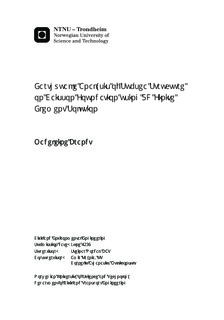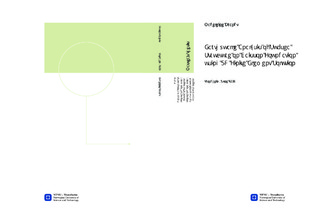| dc.description.abstract | One of the challenging problems in geotechnical design of caisson foundations for offshore structures is the determination of soil-structure interaction during earthquakes. In this thesis, earthquake analyses were performed on a subsea structure resting on a caisson foundation. The objective was to evaluate the soil-structure interaction, using a direct, integrated soil-structure method and a simplified, practical multi-step method. Numerical modeling was done in Plaxis 3D 2012, using two different modeling concepts, in order to investigate influence on the result from the boundary conditions. Model 1 had free vertical boundaries without viscous dampers, whereas Model 2 had viscous dampers defined together with standard fixities.First, linear soil-structure interaction analyses were performed, where the soil behavior was modeled with a linear-elastic material model. The analyses were done for a hypothetical case proposed by Multiconsult AS, who provided soil properties, along with the geometry of foundation and structure. In order to perform the dynamic finite element analyses, however, the soil parameters had to be altered, due to the proposed material's relatively low shear wave velocity profile. Using this profile would require too much calculation time and computer capacity, which was not available, because of the requirements for mesh refinement. With the adjusted soil profile, direct analysis yielded results showing only minor soil-structure interaction. It is likely that by using the original, softer soil profile, more significant effects from soil-structure interaction would be obtained. The multi-step method yielded 30-60% higher maximum response of the superstructure than the direct method, depending on the initial choice of modeling concept. Model 1, with lateral boundaries free in the horizontal direction, without the use of viscous dampers, was found to be the most adequate modeling concept. These conditions will, however, not enable absorption of incoming stress waves generated by the vibrating caisson foundation. Default settings for dynamic analyses in Plaxis 3D, corresponding to Model 2, were found to yield erratic results, and are thus not recommended for seismic analyses.A non-linear analysis using the direct method was also performed, in order to investigate possible material and geometric non-linearities. The Mohr-Coulomb material model was implemented, to allow plastic deformations in the soil. Results show that gapping will occur between the top of the foundation and the soil. The difference in response in the non-linear analysis compared to the linear analysis, is negligible for this case. It is reasonable to assume that more significant differences would be experienced using the original soil profile. Dynamic modeling in finite element programs is not straightforward, and require sufficient knowledge about the various considerations that must be made. The computational time is very long, and the analysis requires computers with relatively high capacities, regarding both disk-space and RAM. Non-linear analysis further increase the demand for capacity and calculation time. The multi-step analysis generally takes less time; however, this depends on the selected approach in dealing with the various steps of the analysis. | nb_NO |

